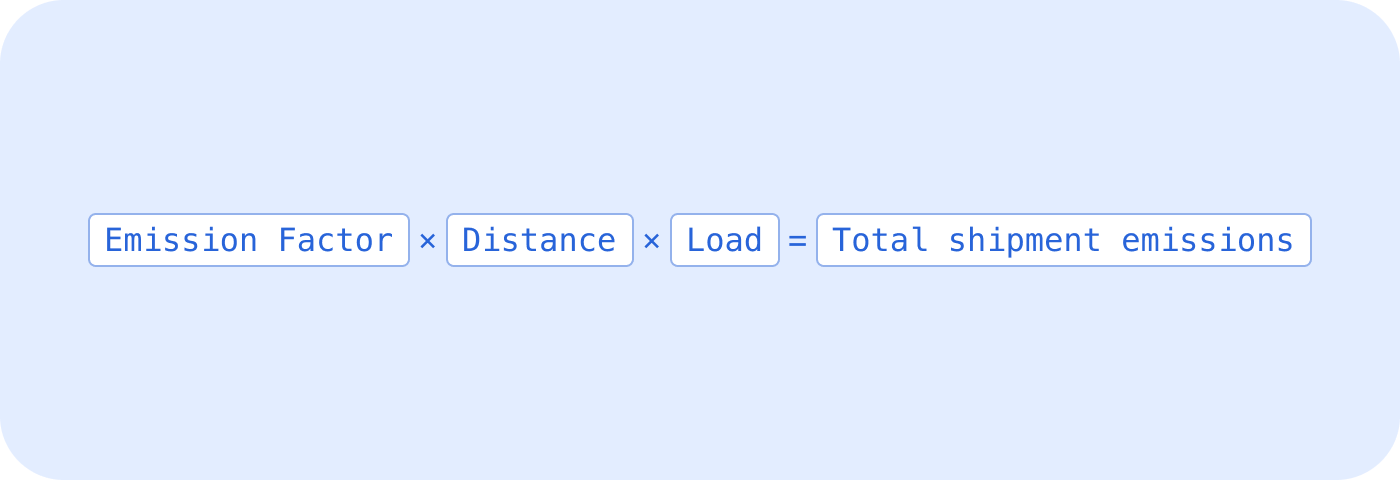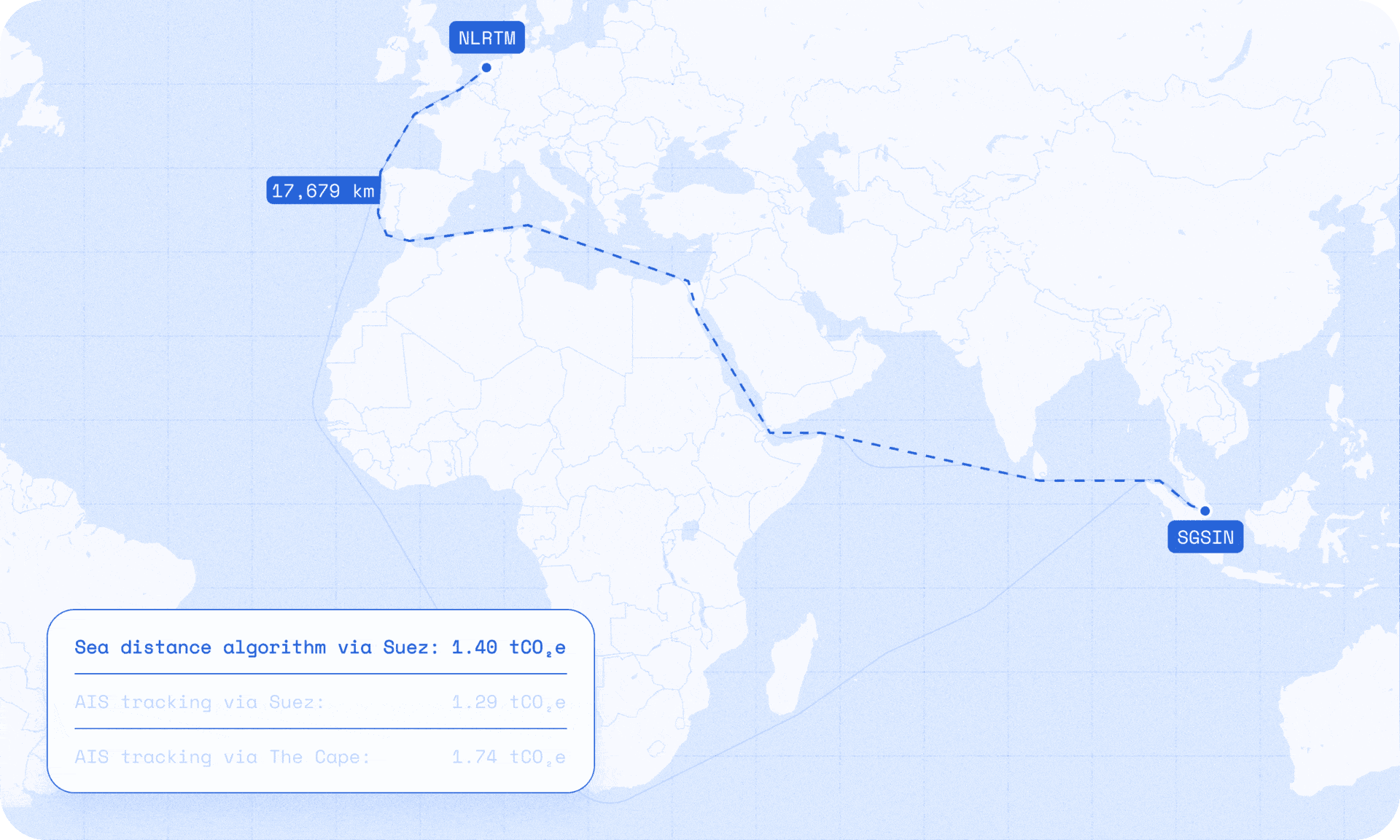
The Red Sea Crisis has captured the world’s attention, and rightly so. For us, it’s highlighted the urgent need for real-time visibility of shipments, especially when it comes to emission calculations.
This is why we’ve harnessed AIS (Automatic Identification System) data to track the actual vessel route, to unlock next-level accuracy in emissions calculations.
A quick recap: what’s happening in the Red Sea?
Houthi rebels have been attacking commercial ships passing through the Red Sea on their way to the Suez Canal. It’s the shortest shipping route from travelling to the global north to the global south — and vice versa. But the risk means carriers have decided to take the long way around the Cape of Good Hope.
The Red Sea Crisis is just one extreme example of shipments being diverted. But logistics is complex, meaning diversions happen all the time. And so, we need to account for last-minute changes in distance when calculating emissions.
Why is this impacting emission calculations?
Usually, to calculate the emissions of a shipment you’d use the shortest feasible distance, load, and the emission factor to estimate the tonnes of CO₂e produced. At Lune, we estimate the shortest feasible distance using our proprietary sea distance algorithm and add a 15% buffer as per the GLEC Framework. From here, we can automate emission calculations to exceed the industry standard set by the Smart Freight Centre.

But when unexpected disruptions hit, we need to account for last-minute changes in distance. By diverting vessels to alternative trade lanes, the time a shipment spends at sea increases. The longer a ship spends at sea, the greater the total emissions.
Using vessel tracking to calculate logistic emissions
At Lune, we're committed to calculating the most accurate emissions possible. This is why our emission calculations can now use vessel tracking to pinpoint the actual distance travelled, making them the most up-to-date calculations in the market. Let’s use the Red Sea Crisis to show this in action. Say a 20 tonne shipment is travelling from Singapore to Rotterdam on the vessel EVER AIM, we can compare the results created by three different distance scenarios.
- Lune’s sea distance algorithm calculates the shortest feasible distance and adds a 15% buffer as per the GLEC framework
- We use AIS data to track the vessel through the Suez Canal (i.e. pre-crisis)
- We use AIS data to track the vessel around the Cape of Good Hope (i.e. post-crisis)
The GIF reveals while our algorithm closely matches pre-crisis tracking, rerouting around the Cape can skew emissions by nearly 30%.
 Total emissions are calculated using Lune’s sea distance algorithm which calculates the shortest feasible distance plus a 15% buffer vs. tracked vessel emission calculations for a voyage through the Suez Canal vs. tracked vessel emission calculations around the Cape of Good Hope. Each calculation uses the same vessel and load.
Total emissions are calculated using Lune’s sea distance algorithm which calculates the shortest feasible distance plus a 15% buffer vs. tracked vessel emission calculations for a voyage through the Suez Canal vs. tracked vessel emission calculations around the Cape of Good Hope. Each calculation uses the same vessel and load.While calculating emissions using Lune’s sea distance algorithm is sufficient in most cases, the Red Sea Crisis is just one example where the actual distance travelled is much longer than the shortest route. For companies who want next-level accuracy, Lune can now track voyages with AIS data to calculate their shipment emissions.
Navigate a sustainable course with Lune
With Lune, shippers can now publish even more accurate emission reports, creating the decision-useful insights needed to decarbonise the industry. Ready to navigate a sustainable course? Request a demo today.
Readers also liked
Readers also liked

Subscribe for emissions intelligence insights
Get the latest updates in the world of carbon tracking, accounting, reporting, and offsetting direct to your inbox.


